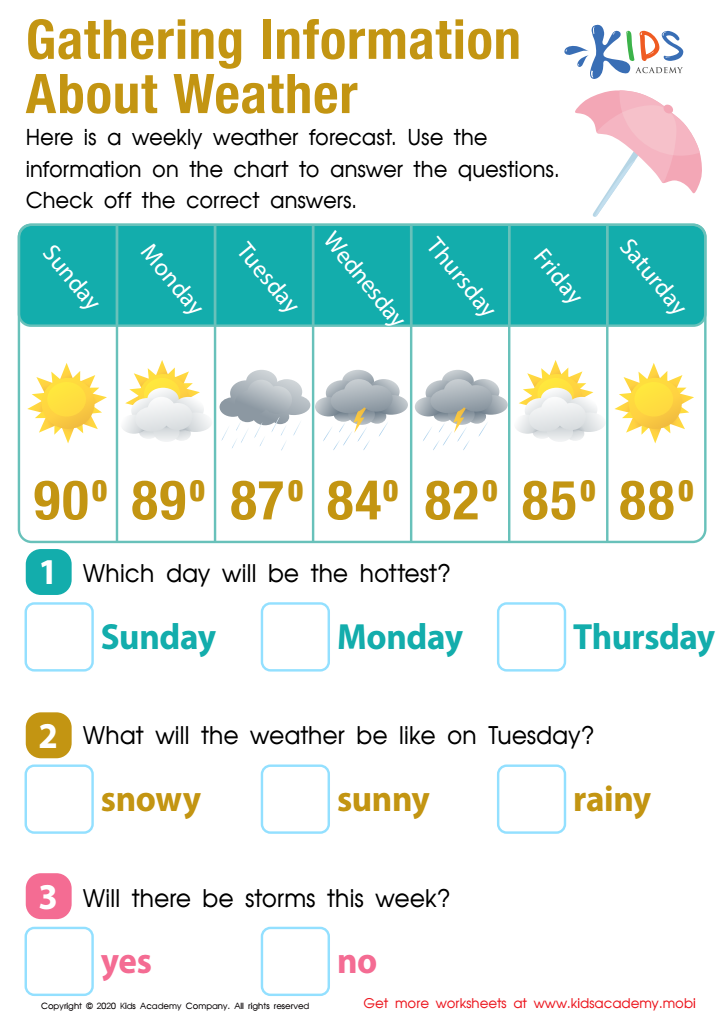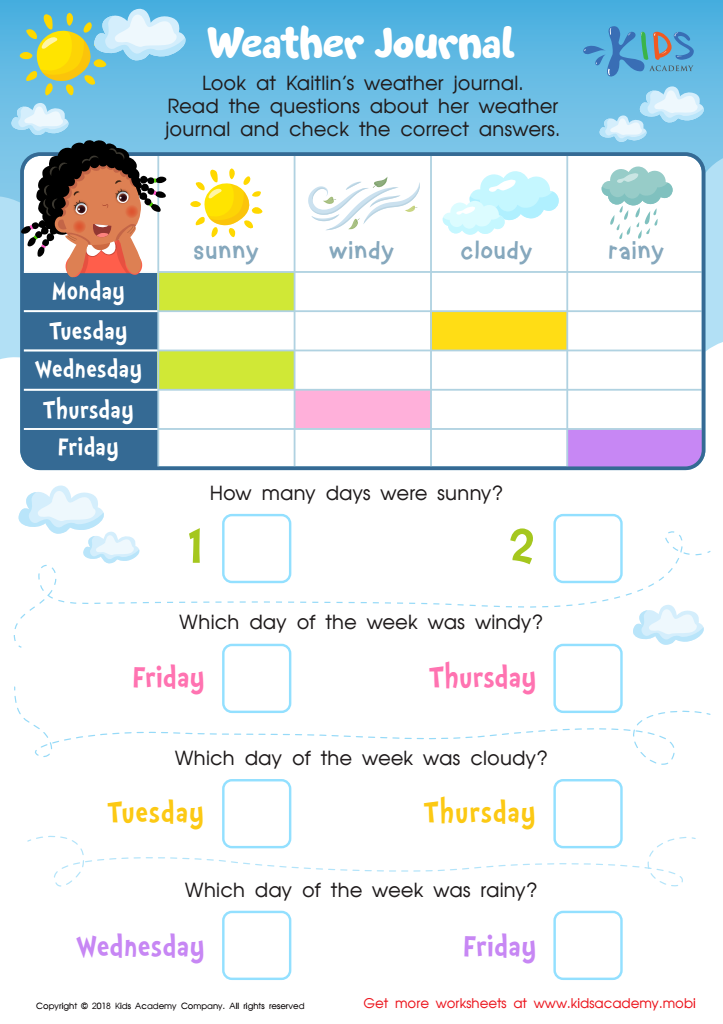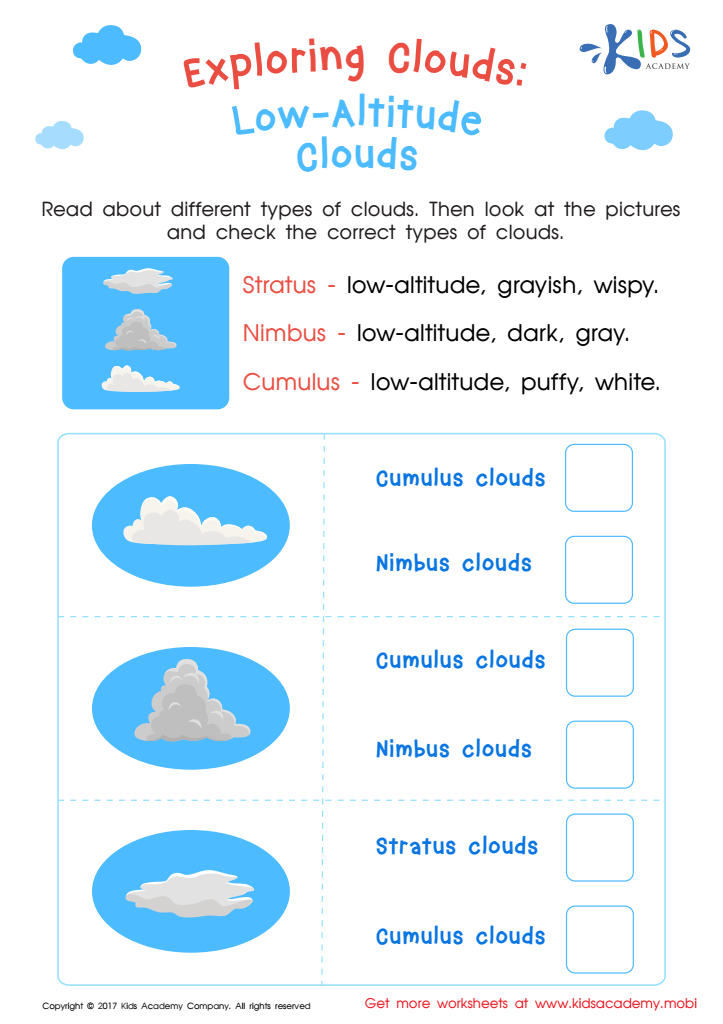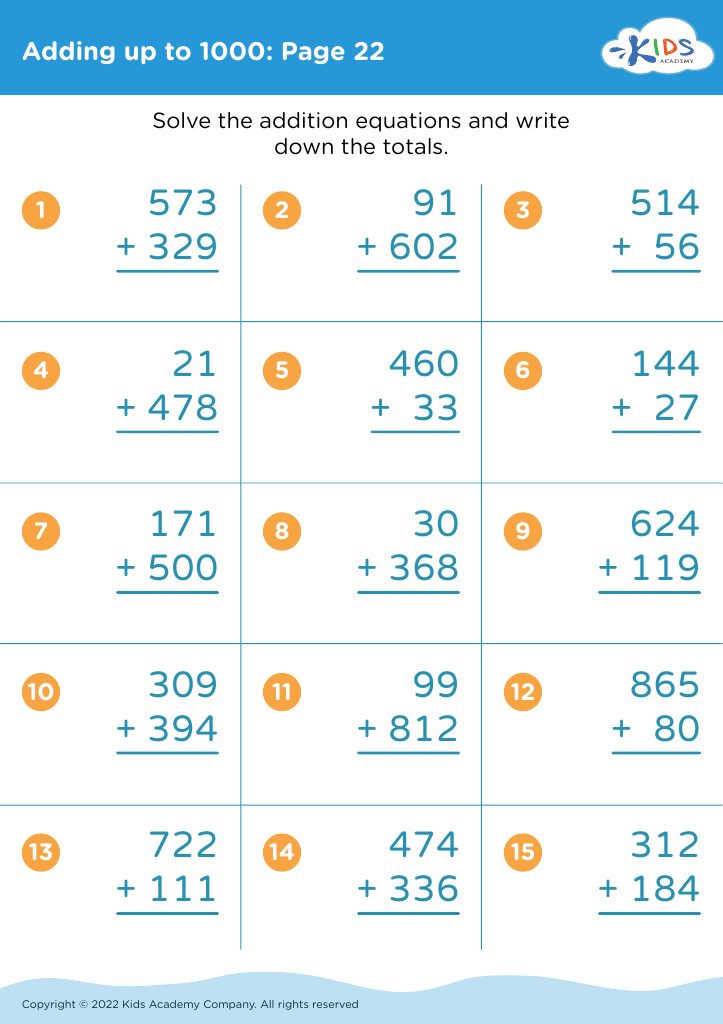Understanding weather Worksheets for Kids
4 filtered results
-
From - To
Understanding weather is crucial for all ages. Our Understanding Weather Worksheets offer interactive learning experiences. Benefits include a hands-on approach to explore weather phenomena like temperature and clouds, fostering critical thinking. The worksheets feature engaging visuals to aid enjoyment and memory, addressing various learning styles with questions and activities that enhance analytical abilities. They also deepen awareness of weather's impact on life and the environment, preparing students to make informed choices about climate issues and safety. These worksheets create a comprehensive educational journey, sparking curiosity and important life skills.
(Characters without spaces: 700)


Gathering Information About the Weather Worksheet


Weather Journal Worksheet


Exploring Clouds: Low Altitude Clouds Printable
Question/Answer
How to train the Understanding weather skill in Grade 1 students learning about Weather?
To train Grade 1 students in understanding weather, start with basic concepts like identifying different types of weather (sunny, rainy, windy, snowy). Use interactive activities such as weather-themed arts and crafts, storytelling about weather, and daily weather charting in class. Incorporate simple experiments to demonstrate rain formation or wind. Engage them with weather-related songs and videos to reinforce learning.
Why is the Understanding weather skill important for Grade 1 students?
Understanding weather is important for Grade 1 students because it helps them recognize daily weather patterns, dress appropriately, and understand the natural world around them. This foundational knowledge enhances their observation skills, promotes scientific curiosity, and supports their safety by making them aware of weather-related hazards.
How to test a Grade 1 student’s Understanding weather skills?
To test a Grade 1 student's understanding of weather skills, create a mix of simple multiple-choice questions, true or false statements, and matching activities focusing on identifying different types of weather, weather symbols, and basic weather concepts such as temperature and the seasons. Include visuals where possible, and consider a hands-on activity like observing and documenting the day's weather.

 Assign to the classroom
Assign to the classroom













